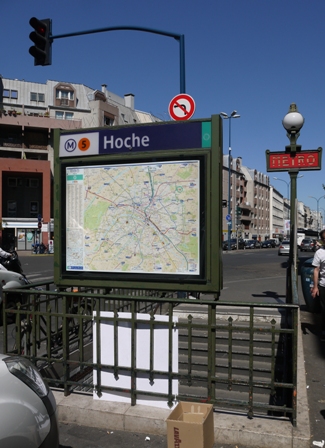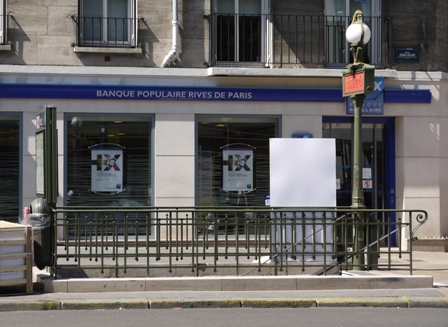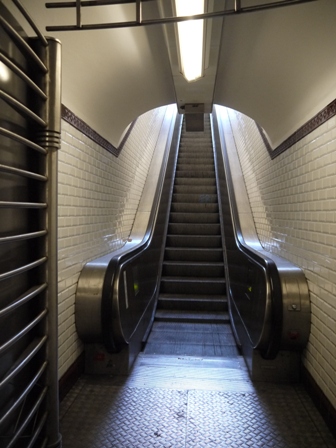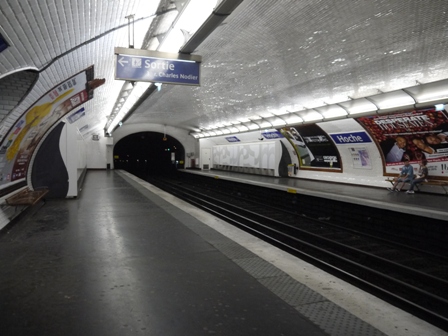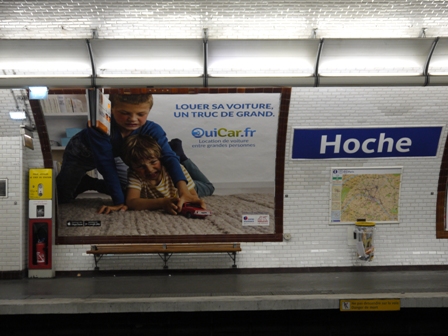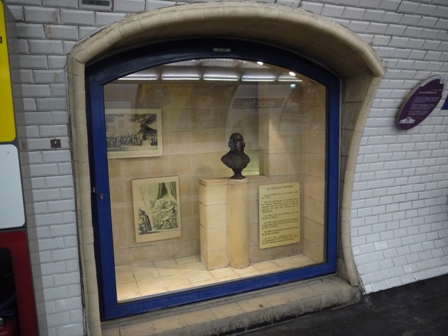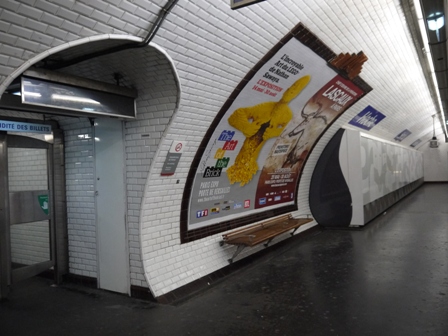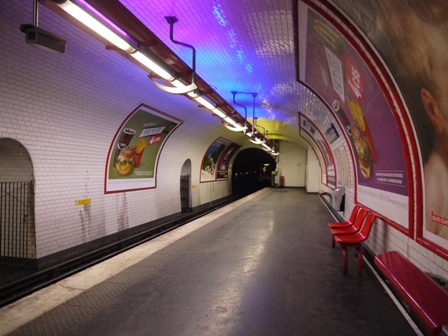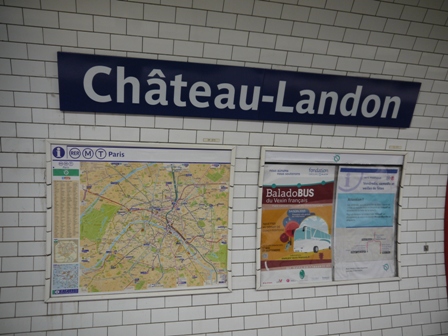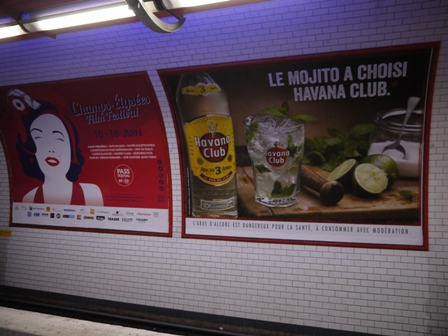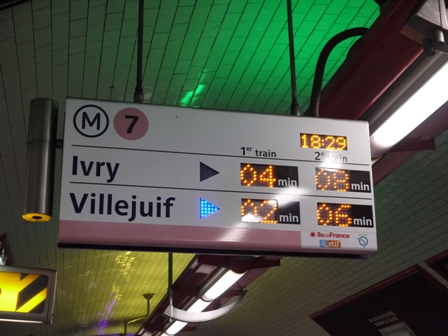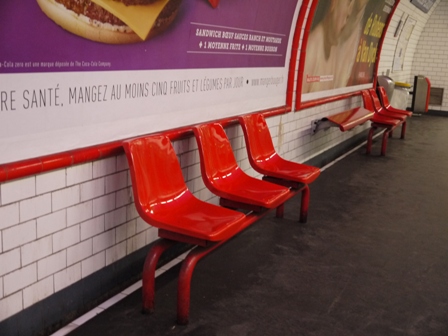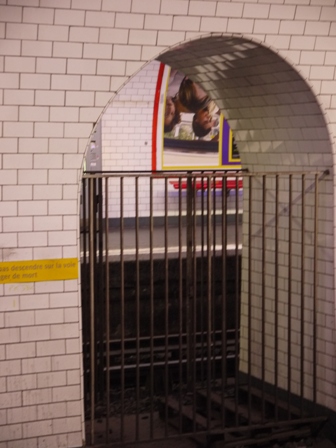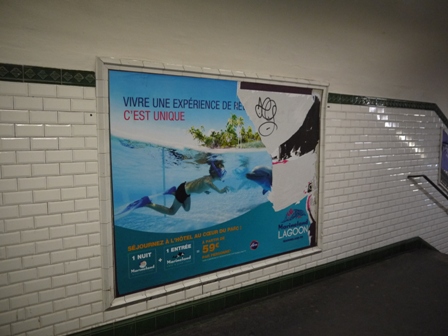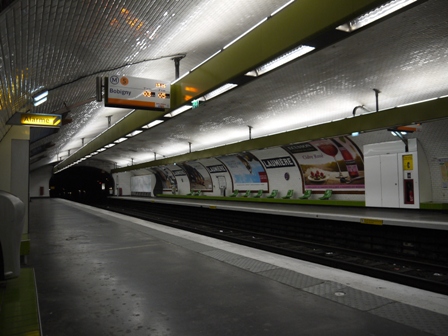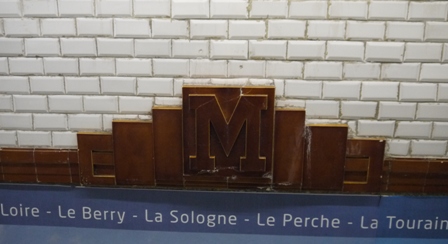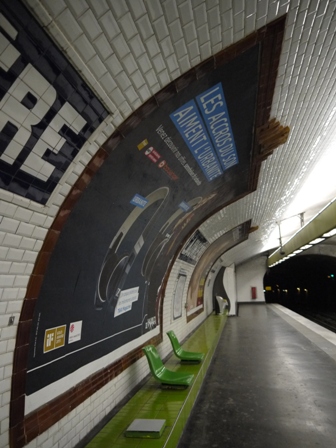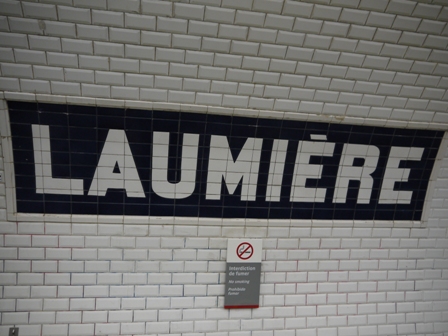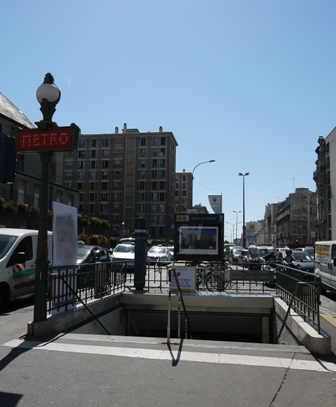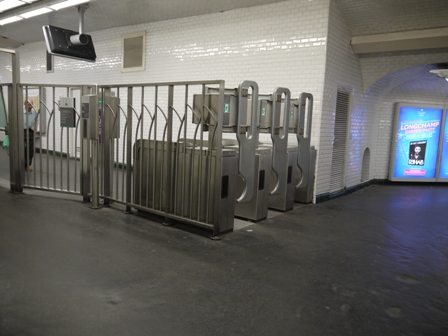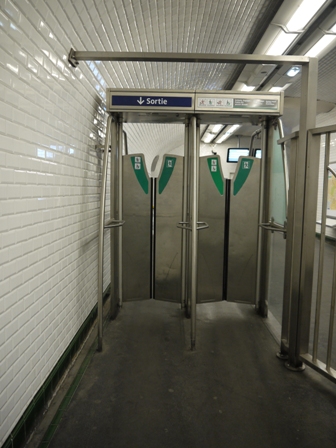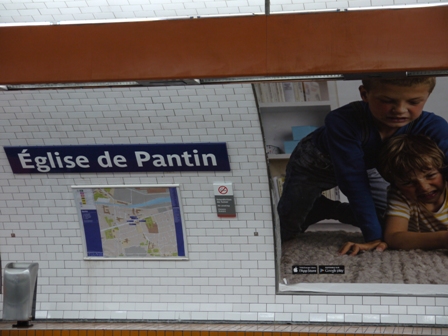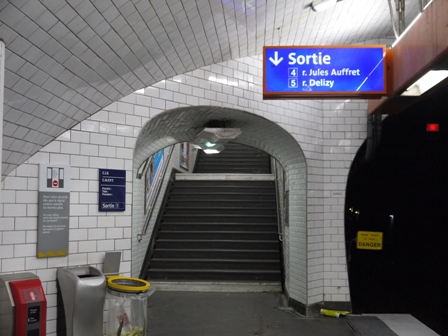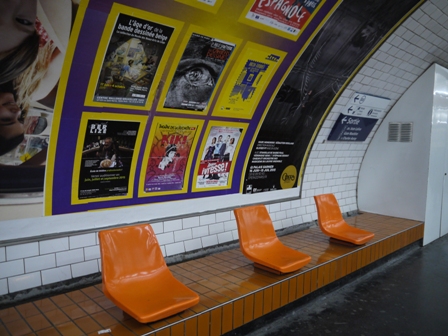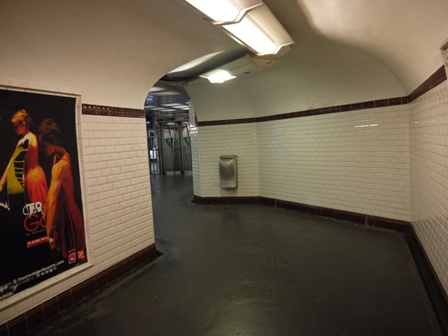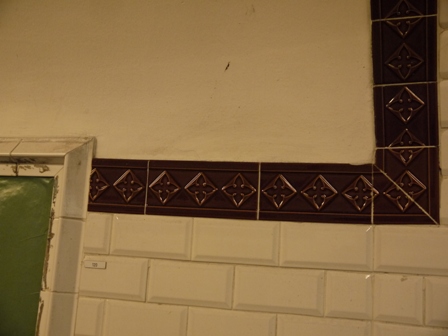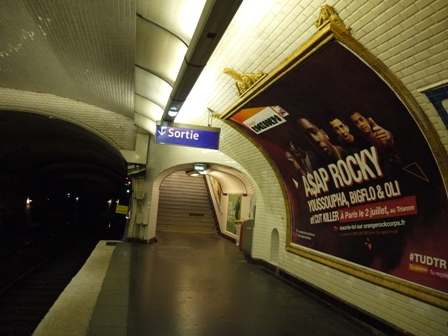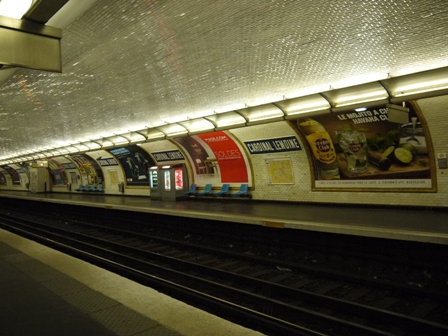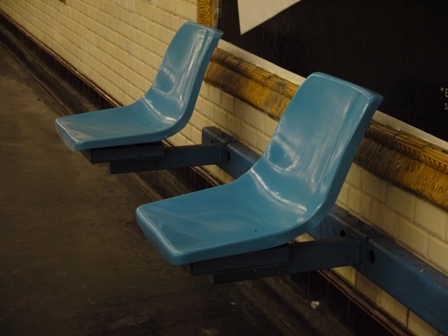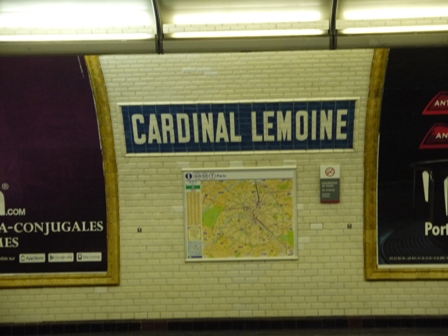- Details
The station opened on 12 October 1942 with the extension of the line 5 to Église de Pantin. The station is named after Lazare Hoche (1768-1797), who defeated the Austrian army at Woerth in the Alsace region in 1793.
The station is situated in the community of Pantin.
The station sign is in modern green frame, which also includes a map of the metro.
There are no connections from this station.
The entrance of the underground station opens to a wide street.
The fence around the station entrance is made of green metal bars of different lenghts. The entrance is marked by a lamppost of the style Dervaux, which is green with a red sign and a white globe light above it.
The station is equipped with an escalator.
The sturdy metal gates can be closed when the station is shut.
The station has two side platforms.
The ground is painted grey. The edges are marked with a wide white line and a strip with raised knobs.
The curved ceiling is tiled.
The lights are in the Bruno-Gaudin style. The lights in the lower encasings are shining upwards and reflect in the metal of the top level.
The platform name is prined in white letters on blue plastic and surrounded by a white frame. Below it is a map of the transport network.
The chocolate brown advertising frame on the wall is made of ceramic tiles which each have three different thicknesses, giving the feel of three frames.
One of the platforms incorporates a window display about the life of General Lazare Hoche and the battle at Woerth.
A wooden bench has been fixed to the wall underneath an advertising frame. The top of the advertising frame is decorated with several squares stacked on top of each other. The top square has the letter "M" in 3D.
- Details
The station opened on 5 November 1910.
It is situated in the 10th arrondissement. The station takes its name from the nearby rue Château-Landon, which in turn was built on land owned by a family from the Château-Landon area.
It is served by the metro line 7.
The platform has been built on unstable ground, so a centre wall has been added to support the site. Some arched breakthroughs have been added as well.
The walls and vaulted ceiling are tiled with flat white horizontal tiles.
The red lights are in the Ouï-dire style - the brackets look like scythes.
Access to the platforms is from the end.
The station name is printed in white mixed case letters on a blue sign.
Below the sign is a framed map of the train, metro and tram network.
The advertising boards on the supporting central wall are framed with red ceramic tiles.
The electronic display shows the present time and information for the next four trains of the line 7. The line separates further on, so the waiting times for the next two trains for each branch are shown. The next train due is going to Villejuif, the blue branch line. This is highlighted by the blue triangle.
Red plastic seats are mounted to red metal arches fixed to the ground. There are also some steel benches covered in red plastic foil and fixed to the wall.
The central supporting wall is quite thick. The entrance to the arches have been fitted with gates.
- Details
The station opened on 12 October 1942 when the line was extended to Église de Pantin. The underground station is situated in the 19th arrondissement.
The station takes its name from Xavier Jean Marie Clément Vernhet de Laumière (1812 - 1863), a general killed during the French intervention in Mexico. It is served by the metro line 5.
The walls in the corridor are tiled to about head-height and topped with a border of green tiles with a flower pattern. The tiles closest to the ground are plain green.
Advertising has been placed in white ceramic frames.
The platforms are on either side of the tracks.
The vaulted ceiling is tiled.
The lights are in row of green rectangular boxes above the platform edge.
The platform edge is marked in white, with a row of knobbed tiles.
The centre decoration on the advertising boards is made of stacked squares, topped with the letter "M" in a square in the symetric Art Deco style.
The walls are covered in white tiles with a raised centre.
Green plastic seats have been fixed to a base of green ceramic tiles along the wall of the platform. They match the light casings.
The advertising boards behind are framed with brown ceramic tiles in clear geometric lines.
The signage is made of rectangular white ceramic tiles where the station name has been left white and the rest painted blue before being burnt. It is in upper letters. The tiles are surrounded by a white ceramic frame.
- Details
The station opened on 12 October 1942 and was a terminal until 25 April 1985, when the line was extended further to Bobigny - Pablo Picasso.
It is situated in the community of Pantin, next to the church (église). The station Église de Pantin is served by the metro line 5.
The station entrance is sourrounded by a green fence with bars of different hights. To the left of it is a lamppost in the style of Dervaux. The station sign is in a square modern sign. The stairs have an additional handrail in the centre.
A thick white line has been painted on the ground in front of the entrance.
The walls of the ticket hall are tiled to the ceiling with shiny white tiles. The metal barriers open when passengers place their electronic pass close to the sensor or feed their paper ticket into the slot.
Exit to the ticket hall. The two solid metal doors open in the centre when weight is placed on the ground in front of them.
The walls are tiled in white, flat tiles. On the walls is a map of the local area. Above it is the station name in white mixed case letters on a blue plasticised sign.
The lights, which look like orange upside-down flower boxes are in the style Andreu-Motte.
Smoking is forbidden on the platform.
Access to the platform is from the end. The vaulted ceiling is tiled.
Orange plastic seats have been placed on a base made from orange ceramic tiles. They match the metal casings of the lights.
The advertising boards are in metal frames.
- Details
The station Cardinal Lemoine opened on 26 April 1931.
It is situated in the 5th arrondissement. The station is named after Cardinal Jean Lemoine (1250–1313), a papal legate of Pope Boniface VIII to Philip IV. It is served by the metro line 10.
The walls on the corridor towards the exit are tiled until about head-height. They are topped by a row of brown ceramic files with flower pattern.
The brown border tiles have a 3D flower pattern.
Access to the platform is from the end.
The advertising boards are surrounded by a frame of honey-coloured ceramic tiles with a wheat pattern. The top corners and the centre top have flower-shaped ceramic decorations.
The platforms are on either side of the track. The vaulted ceiling and the walls are tiled.
A couple of vending machines have been placed at the centre of the platform so that passengers can buy a snack or drink while they wait.
The lights of the fluorescent tubes reflects on the top of the metal casings.
Light blue plastic seats are fixed to the wall by a blue metal bar.
The station name is stencilled in white capital letters on a rectangle of blue ceramic tiles. They are surrounded by a white ceramic frames.
The walls are tiled with white ceramic tiles, which have a raised centre.

